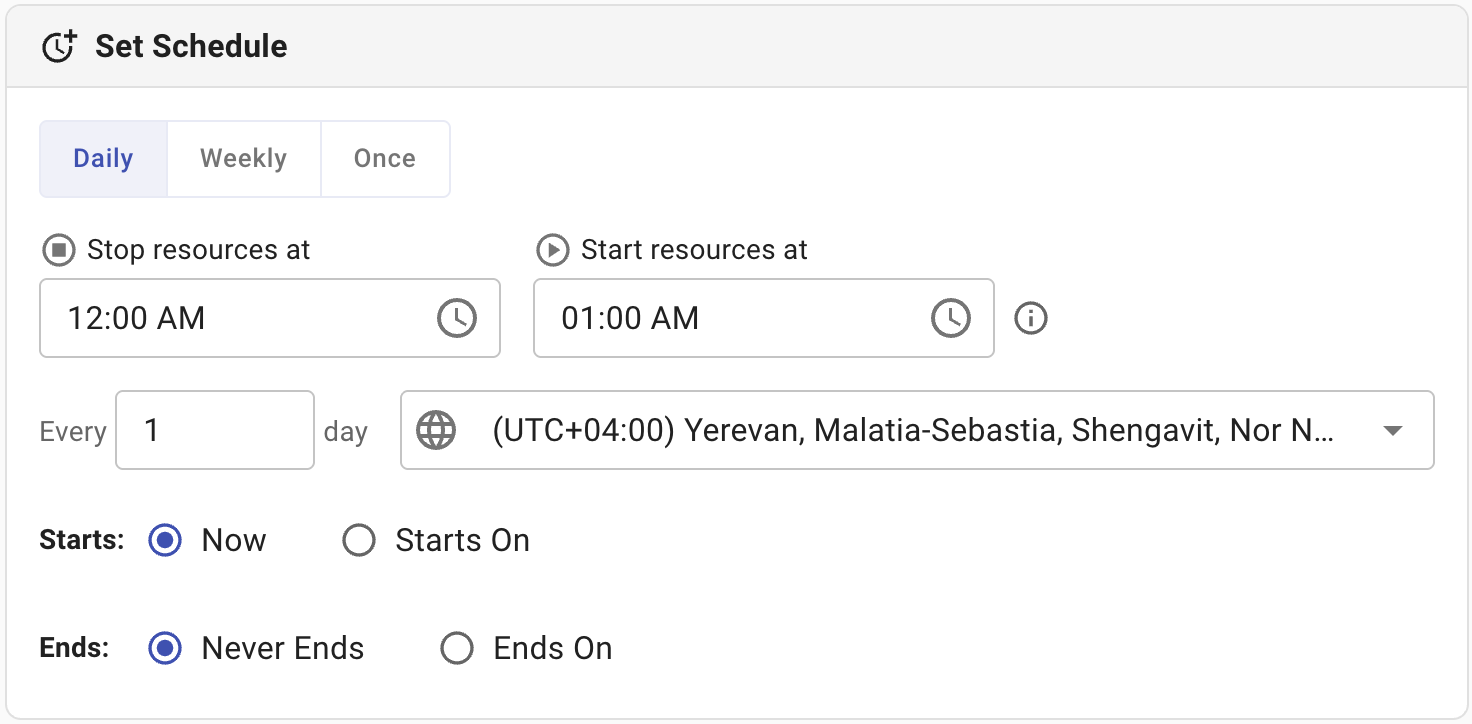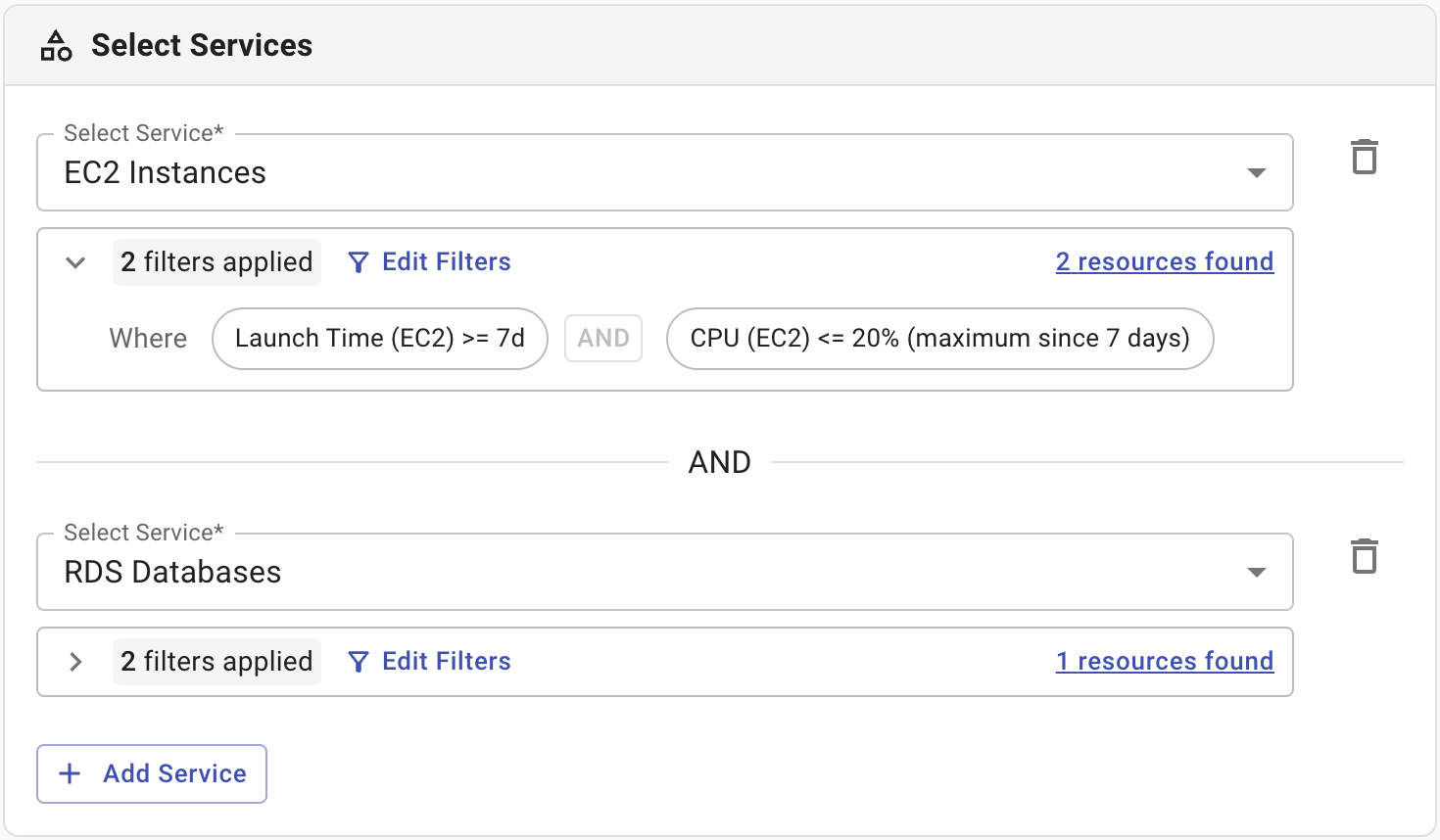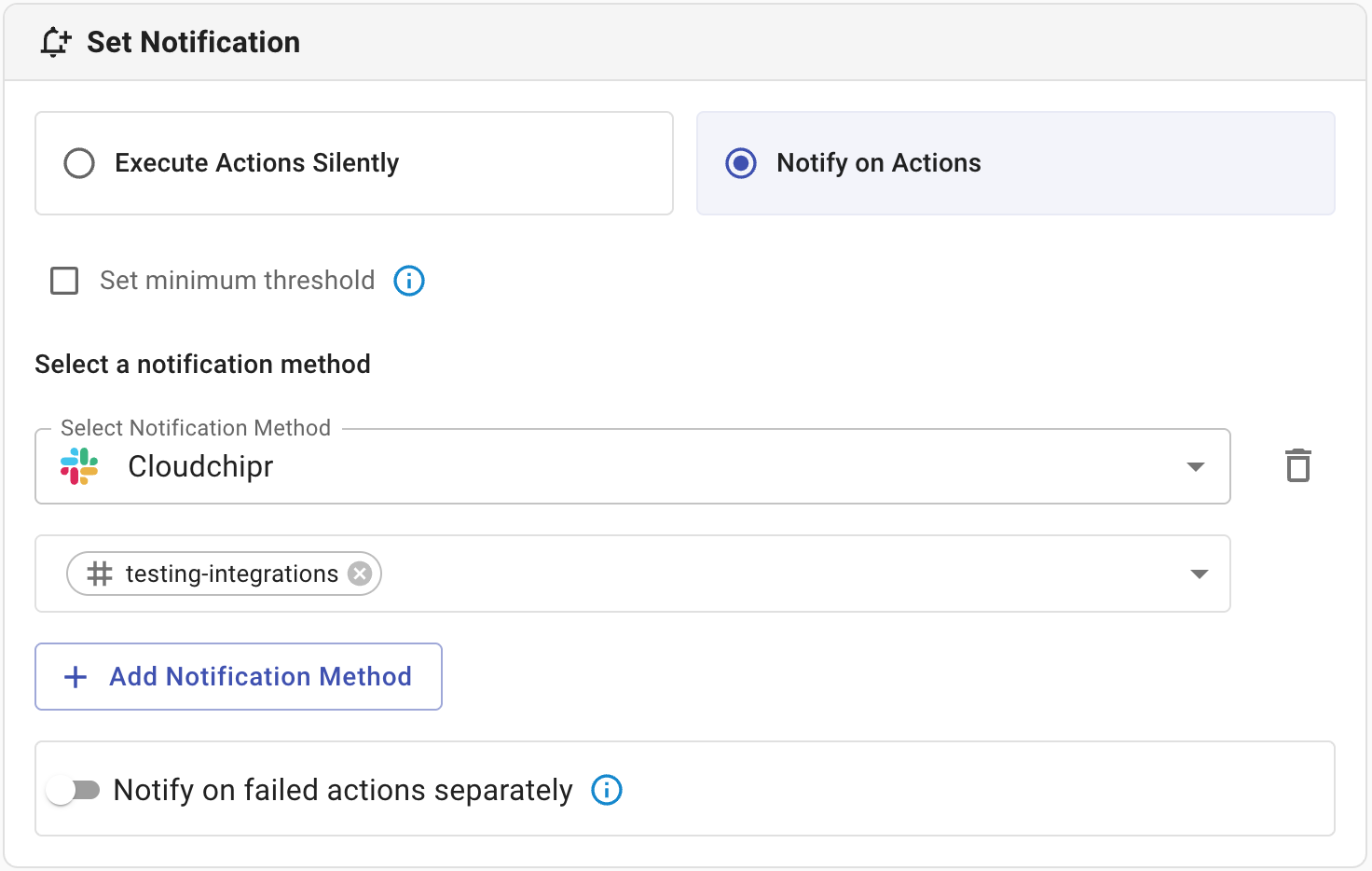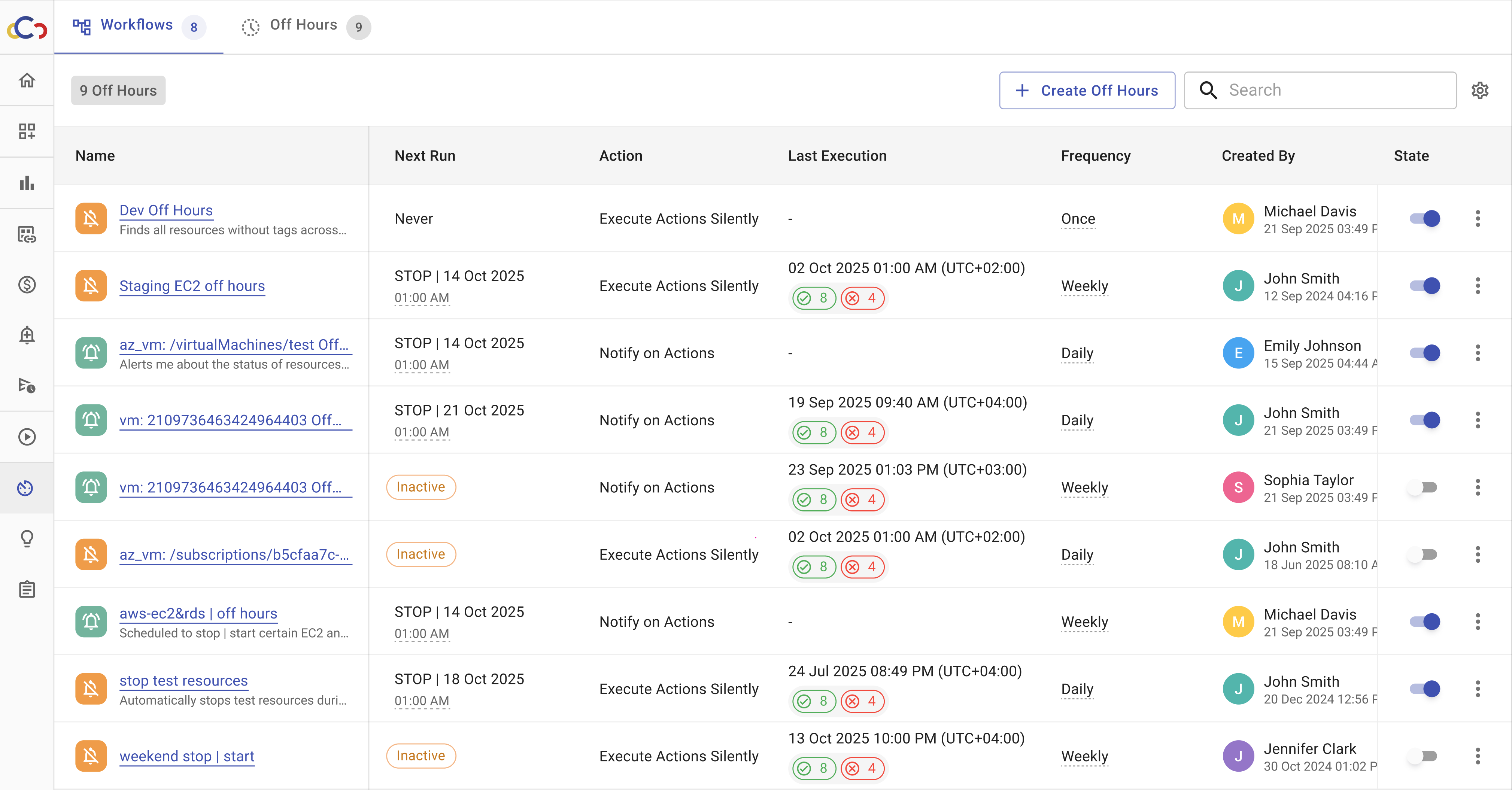Off Hours
The Off Hours allows you to automatically stop and start cloud resources on a defined schedule. This helps optimize costs by ensuring that resources are powered down during non-business hours and restarted when needed.
Create Off Hours
Start by giving your Off Hours a clear and descriptive name. The name should help you and your team easily identify its purpose, especially when managing multiple automations. You can also add an optional description to provide more context.
Step 1: Set Schedule
Define how often and when the Off Hours should run. You can choose from Daily, Weekly, or Once options.
- Stop and Start Times: Define the times when Cloudchipr will stop selected resources and when the resources should automatically start again.
- Every: Specify the frequency (e.g., every 1 day).
- Time: Set the exact time when the automation will run.
- Timezone: Select the appropriate timezone for the automation.
- Starts: Choose whether the automation should start immediately (Now) or on a specific date.
- Ends: You can let it run indefinitely (Never Ends) or define an end date.

Step 2: Select Environment
Choose the cloud environment where the Off-Hours will be executed.
Supported providers:
- AWS
- GCP
- Azure
Within your chosen cloud provider, select one or more accounts and regions.

Step 3: Select Services
In this section, define which cloud services and specific resources your workflow will target.
- Select Service Choose the service for which you want to automate Stop-Start actions. This feature is available only for virtual machines and databases.
- Apply Filters
Use filters to narrow down resources that match specific conditions.
For example, you can filter EC2 instances that are Running and have CPU utilization ≤ 20% (maximum over the last 7 days).
Cloudchipr will display the number of resources found that meet your criteria. Click on the
Resources Foundbutton to view these resources in more detail in the opening drawer. You can edit these filters anytime by clicking Edit Filters.

Step 4: Set Notification
Determine how Cloudchipr should handle notifications when Off Hours actions (start/stop) occur.
- **Execute Actions Silently **No notifications will be sent when resources stop/start.
- **Notify on Actions
**Receive alerts when scheduled actions are executed.
- Notify on Failed Actions Separately Turn this option on to receive dedicated notifications only for failed actions. This helps you stay informed about issues without receiving alerts for successful executions.

Step 5: Preview and Create
After configuration, review all workflow details — including schedule, environment, selected services, and notifications — before creating it.
Once confirmed, click Create to activate it.
Off-Hours Page
The Off-Hours page provides a centralized view of all automated Off-Hours schedules. From this page, you can easily track, manage, and control all schedules.
Off-Hours Table
The table lists all existing schedules with detailed information to help you understand and manage their configurations:
- Name and description
- Next Run: The dates and times of the Off-Hours next scheduled executions.
- Last Execution: The date and time when the Off-Hours was last executed. A success or failure indicator allows you to quickly assess whether the automation executed correctly. Also there is an ability to view the execution logs which you can find in the Execution Logs section.
- Action: Indicates whether the automation runs silently or with notifications enabled.
- Frequency: The interval at which the workflow runs (Hourly, Daily, Weekly, or Once).
- Accounts: The cloud accounts targeted by the automation.
- Created By and Last Modified By: The users who created the automation and who last updated the configuration.
- State: A toggle that allows you to enable or disable the automation without deleting it.

Available Actions
From the Off-Hours page, you can manage your automations using the action buttons next to each entry:
- Edit
- Duplicate
- Delete
Updated 2 months ago
